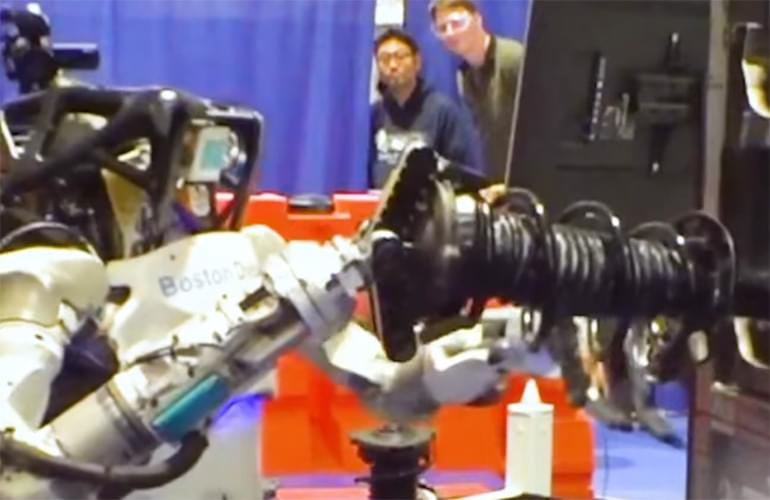Page 553
Feb 6, 2024
The Iconic Photos from STS-41B: Documenting the First Untethered Spacewalk
Posted by Genevieve Klien in category: space
The MMU was the highlight of the STS-41B mission as demonstrated by the stunning mission photographs that graced the cover of Aviation Week & Space Technology, not once, not twice, but three times.
“Hoot” Gibson, the flight’s pilot, shot the photograph featured on the February 20, 1984, issue of the magazine from the crew cabin. Gibson remembered he was the only one on the crew that “had absolutely nothing to do” as McCandless made his way out into space, so he picked up a Hasselblad camera and began documenting the events. When he first looked through the camera’s viewfinder, he could not believe what an incredible sight it was to see McCandless untethered, floating above the Earth. Gibson wanted to capture what he was seeing and remembered how meticulous he was. For each photograph he took three light meter readings and checked the focus four times. In the crew’s photography training he learned that an off-kilter horizon looked wrong and was not pleasing to the eye. That presented a slight problem because Challenger was at a 28.5-degree inclination, so he “tilted the camera to put the horizon level in the pictures.”
Feb 6, 2024
Hubble’s New Photo Shows the Immense Scale of Galaxies
Posted by Genevieve Klien in category: space
Feb 6, 2024
Breakthrough recombinase technology ushers in precise, adaptable gene editing
Posted by Paul Battista in categories: bioengineering, biotech/medical
A team of researchers at the Carl Gustav Carus Faculty of Medicine, TUD Dresden University of Technology, led by Prof. Frank Buchholz, has achieved a major breakthrough in genome editing technology. They’ve developed a cutting-edge method that combines the power of designer-recombinases with programmable DNA-binding domains to create precise and adaptable genome editing tools.
Traditional genome editing faced limitations in achieving ultimate precision until now. Prof. Buchholz’s team has broken through this barrier by creating what many have sought after: a zinc-finger conditioned recombinase. This innovative approach involves integrating a zinc-finger DNA-binding domain into specially designed recombinases. These enzymes remain inactive until the DNA-binding domain engages with its target site, adjacent to the recombinase binding area.
The significance of this achievement lies in the fusion of two key strengths: the targeting ease of programmable nucleases and the precise DNA editing capabilities of recombinases. This breakthrough overcomes existing limitations in genome editing techniques and holds vast promise for therapeutic gene editing and various biomedical applications.
Feb 6, 2024
Jaundice: Newborn babies may have a yellowish tint to their skin or the whites of their eyes
Posted by Shubham Ghosh Roy in category: health
This condition is called jaundice. Symptoms can also appear in adults. For adults, it can be a sign of a serious health condition. Learn more about the causes of jaundice:
Jaundice is a yellow coloring of the skin or eyes caused by too much bilirubin in the body. Jaundice can happen for many reasons. Learn about it here.
Feb 6, 2024
Immune response, not acute viral infections, responsible for neurological damage, researchers discover
Posted by Shubham Ghosh Roy in category: biotech/medical
For years, there has been a long-held belief that acute viral infections like Zika or COVID-19 are directly responsible for neurological damage, but researchers from McMaster University have now discovered that it’s the immune system’s response that is behind it.
The research, published on Feb. 5, 2024, in Nature Communications, was led by Elizabeth Balint, a Ph.D. student at McMaster, and Ali Ashkar, a professor with the Department of Medicine and the Canada Research Chair in Natural Immunity and NK Cell Function.
“We were interested in trying to understand why so many viral infections are associated with neurological diseases,” says Balint. “Our evidence suggests that it’s not the virus itself that causes the damage, but a unique population of T cells, which are part of the immune system, that are actually responsible for the damage.”
Feb 6, 2024
An Integrated Approach to Evaluate Acetamiprid-induced Oxidative Damage to tRNA in Human Cells based on Oxidized Nucleotide and tRNA Profiling
Posted by Shubham Ghosh Roy in categories: biotech/medical, life extension, neuroscience
Acetamiprid-induced oxidative stress can harm DNA and tRNA, leading to health problems. A study conducted by Huixia Zhang at Macau University of Science and Technology in 2023 introduced a comprehensive approach to assessing acetamiprid-induced oxidative damage to tRNA in human cells through oxidized nucleotide and tRNA profiling. Acetamiprid, a modern insecticide, is known for causing oxidative stress and related toxicity. Despite its impact on oxidative stress, the effects of acetamiprid-induced oxidative stress on RNA, especially tRNA, remained unexplored until this study.
Acetamiprid was found to elevate reactive oxygen species (ROS) production in HepG2 and LO2 cells, contributing to mitochondrial damage, free radical generation, and antioxidant status depletion. Oxidative damage to DNA and RNA can harm organisms, with prior research addressing RNA damage in aging, neurodegenerative diseases, and mental illnesses. However, its role in acetamiprid-induced toxicities has not been investigated.
The study employed TMSD labeling-based LC-MS/MS to measure oxidized nucleotide levels in HepG2 and LO2 cells treated with two mM acetamiprid. It also examined the impact of acetamiprid on the 8-oxo-G content of tRNAs and created volcano plots to compare RNase T1 digestion products of tRNAs from untreated and acetamiprid-treated cells.
Feb 6, 2024
Scientists Have Solved the 141-Year-Old ‘Reverse Sprinkler’ Problem
Posted by Shubham Ghosh Roy in categories: engineering, neuroscience, physics

This brain-teaser has baffled physicists since 1883. Thanks to some innovative engineering, it finally makes sense.
















